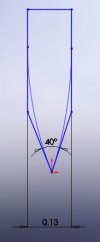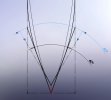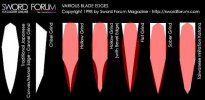- Joined
- Dec 13, 2005
- Messages
- 6,105
Hi folks-
Just wanted to get y'alls thoughts on something. When I sharpen a flat grind or scandi to a 'sharp' edge, I can always tell. I usually tell by cutting a few things like paper, string, shaving, and by literally touching the edge with my fingers. Those all 'feel' sharp to me.
But with a convex edge, it'll often cut well and get hair-popping, but simply doesn't have a sharp feel to it when touched with a fingertip.
Anyone else notice this as a basic quality of convex edges? Or do you normally get that same 'edginess' out of one?
Just curious-
Just wanted to get y'alls thoughts on something. When I sharpen a flat grind or scandi to a 'sharp' edge, I can always tell. I usually tell by cutting a few things like paper, string, shaving, and by literally touching the edge with my fingers. Those all 'feel' sharp to me.
But with a convex edge, it'll often cut well and get hair-popping, but simply doesn't have a sharp feel to it when touched with a fingertip.
Anyone else notice this as a basic quality of convex edges? Or do you normally get that same 'edginess' out of one?
Just curious-



